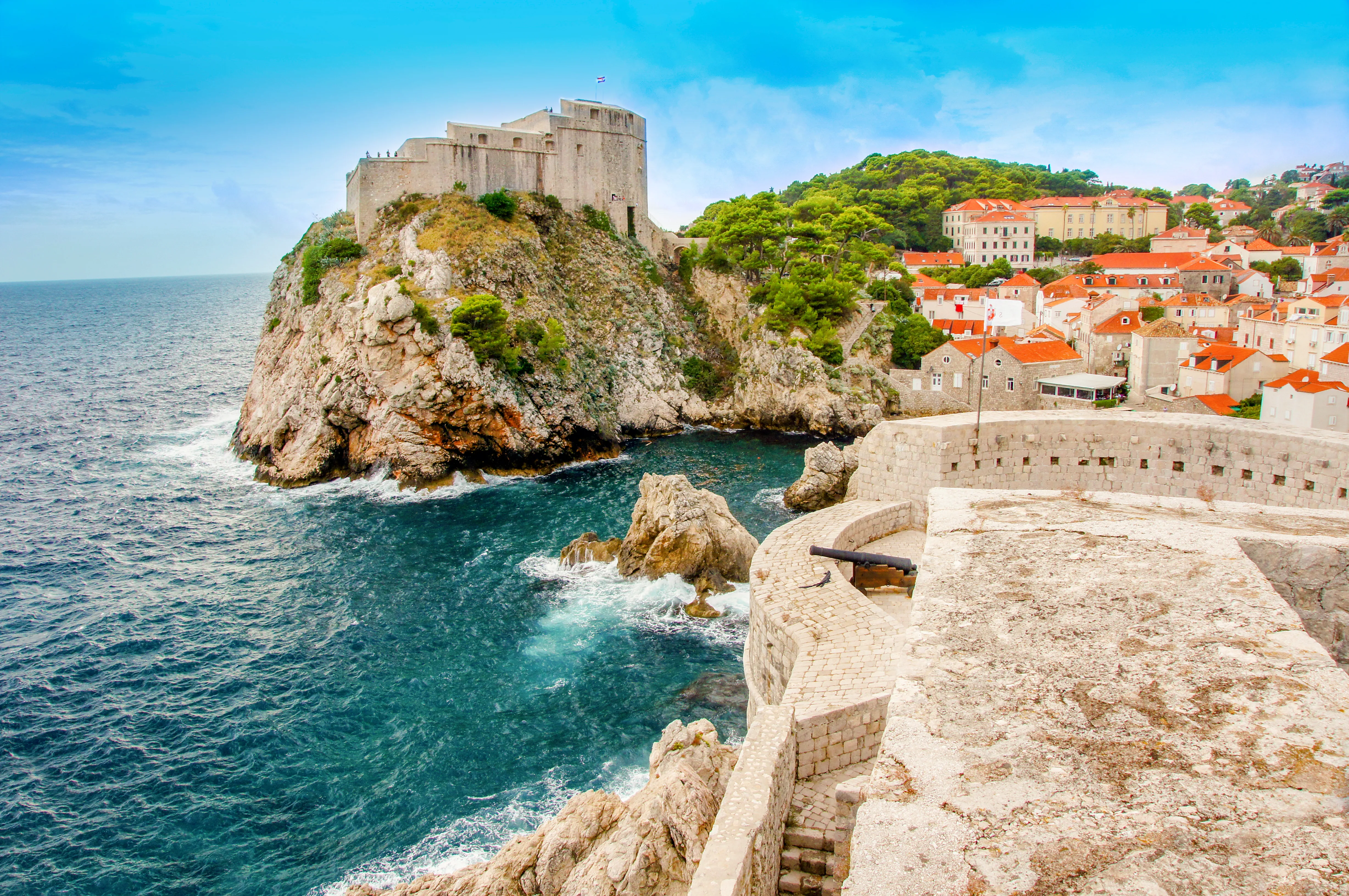- Home
Discover Croatia on a cruise
Traveling through Croatia with CroisiEurope
Embark with CroisiEurope and sail alongside Croatia and Montenegro and wander through countries with fascinating history and breathtaking landscapes.
Get on board of our maritime ship La Belle de l’Adriatique and appreciate the beautiful landscapes all along the Croatian and Montenegrins coasts. Navigate along seaside, from one city to another, all comfort in our ship, while contemplating breathtaking panoramas.
Croatia is a welcoming and fascinating country that will amaze you with its numerous historical sites and splendid landscapes between national parks, waterfalls and medieval fortified cities.
The history and architecture enthusiasts will delight themselves with getaways in open sky museum cities, testifying remnants of the past in exceptional states of conservation.
Zoom on the stops of our cruise : Croatia and Montenegro
Dubrovnik, pearl of the Adriatic
Nested between fortress and mountains, Dubrovnik is a medieval architectural jewel enclosing behind its ramparts, more than a thousand years of history.
Between marble paved lanes and roofs with pink tiles crafted in Toulouse (France), Dubrovnik is considered as an open sky masterpiece.
In the old town of Dubrovnik, numerous of historical buildings stand alongside the streets, such as the Cathedrale of the Assumption of the Virgin Mary, the Sponza Palace, nowadays an archive center of the city even the Rector’s Palace. There’s also the Dominican Monastery and its gothic cloister preserving an orange tree and palm tree garden. The Monastery also hides the famous Nikola Bozidarevic painting representing Dubrovnik before the 1667 earthquake. The cable car of Dubrovnik offers a panoramic view on the city and the Adriatic Sea.

Mljet
Often considered as the most beautiful island of the Adriatic, Mljet is rich by its luxuriant nature and is protected as National Park one third of the island. Covered at 72% with forest, the island maintains a wild aspect. It’s here on Mljet Island, that Odysseus was held prisoner by Calypso for 7 years according to The Odyssey by Homer. Plenty of sand beach surround the island and some of them, in the bay, give the occasion to swim in salted water lakes surrounded by green hills. On one of them - Véliko Jezero Island – in the heart of the National Park of Mljet, stands a Benedictine Monastery from 12th century.
Korcula

Korcula, eponymous town of the island it stands on, is a typical medieval fortified Dalmatian town. In between mountains and azure colored sea water, it is also green of woods and vines. Randomly wandering in its narrow streets, you can find the St Mark Cathedral, mix between gothic and Renaissance style, remnant of the dexterity of the stone carvers and the talent of the contemporary sculptors. Korcula is also the ideal city to taste the specialties of the Croatian gastronomy.
Sibenik
Sibenik, is the most ancient Slav city on the Adriatic. Ideally located at the edge of a beautiful bay facing Kornati Islands, it is rich with an important cultural heritage. Crossing the streets from 15th and 16th century, it is possible to visit the Cathedral of St James (listed on UNESCO’s World Heritage) built with stones between 1433 and 1477. It’s near Sibenik that we can explore Krka National Park, inescapable spot and breathtaking work of art of nature with remarkable waterfalls. These impressive waterfalls on 17 different levels took form on the Krka River where the fauna and flora is much diversified.

Trogir
Trogir, city listed on UNESCO’s World Heritage for its roman and Renaissance architecture is built on a 1km square Island. Typical with its labyrinthine streets with stairs and vaulted passages, the old town preserves from its golden age, plenty of intact monuments.
Split
Split, the heart of central Dalmatia with its historical jewel: the Diocletian’s Palace, Roman emperor from 4th century. Vestige particularly well preserved diving us in the history of the Roman, Egyptian and Greek world, they expand on a large part of the town. It is also possible to visit the cellars of Diocletian’s Palace, listed on UNESCO’s world heritage, an antique substructure that once held up the private apartments of the Emperor and represents one of the best preserved ancient complexes of their kind in the world. The Archeological Museum of Split counts plenty of Ancient items. Split is unquestionably an historic nugget that will charm history enthusiasts. If you reach the Marjan Hill, Natural Park that culminate at 178 meter high, the site will offer a fantastic view of Split and the Adriatic. A walk along The Riva on the seaside will offer beautiful sunset to watch.
Hvar
The city of Hvar, picturesque and hidden behind a fortress is considered as the Croatian Saint-Tropez.
The city offers a spectacular view on the bay and a bike ride will reveal the hidden part of the island and its crystalline waters. As every Croatian cities, it is full of architectural heritage.
Kotor
Kotor is listed at the UNESCO’s world heritage and it covers 70% of the historical monuments of Montenegro. Here, you will tread the multiple Empire succeeded themselves in the past. The two bells of the Cathedral belong to Renaissance style and represent a unique construction design on the littoral.
Kotor, Mediterranean fjord is a history and nature treasure hidden in between the mountains.

